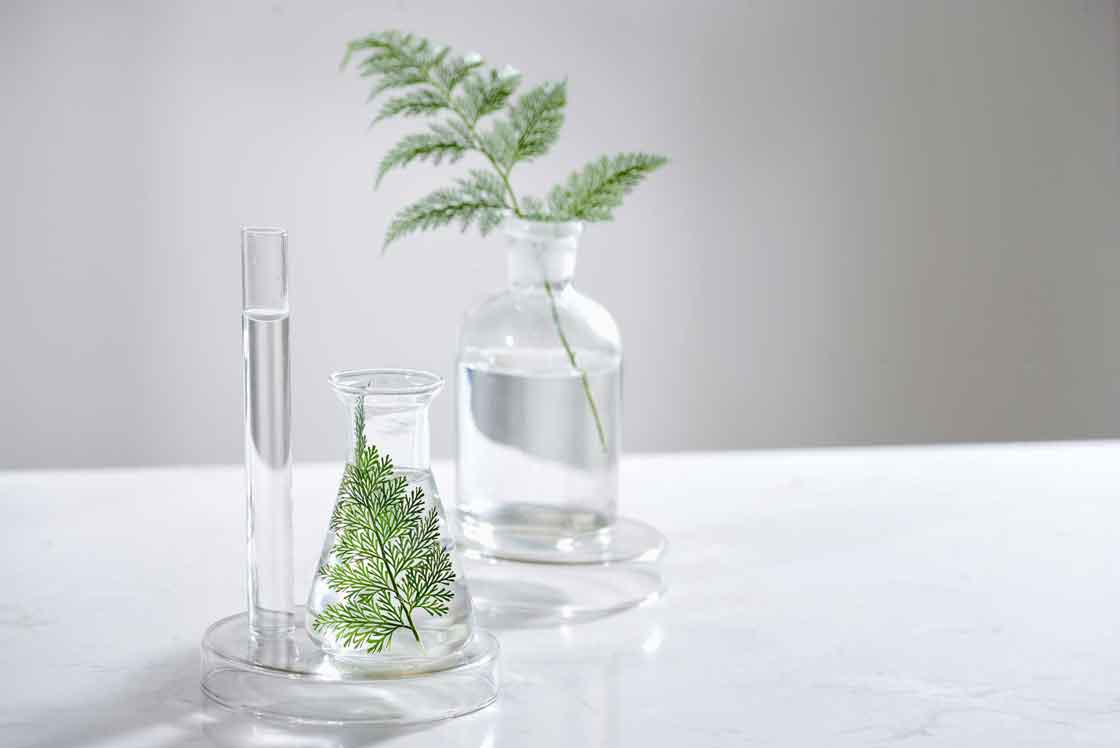
10 Jan What is ‘clean beauty’ and why is it so important?’
It seems that there’s been a shift towards a holistic approach to wellness. This may largely be due to the availability of information that can be found online. Consumers demand goods with a focus on natural components and reject the artificial. They seek healthy living as a form of balance amid today’s global instability.
For a while now (particularly among younger generations) clean lifestyle choices have been trending. Clean living has become a larger part of the discussion since 2015, with a cumulative increase of 1,470 percent across multiple media outlets.
So, what does a clean beauty product mean to people these days?
What is it?
In a nutshell, with your beauty products, the idea is to try and guarantee that your skin is safe from harsh chemicals. This includes selecting skincare, perfumes, and makeup that’s free from ingredients such as parabens, sulfates, and artificial fragrances, as well as selecting those made with 100% clean ingredients that are sustainable.
In the last decade, the clean beauty trend has been a key force in the beauty industry. The phrase ‘clean beauty’ is more common than it previously was. Online references have shot up. Mentions of clean beauty on media platforms have risen by over 29,000 percent since 2015 alone.
Consumers are, however, split over the definition of clean beauty. Many definitions, including green beauty, cruelty-free products, and organic ingredients, are popping up. It seems that customers are more worried about ‘organic’ skincare items in general than with ‘natural’ makeup. Parabens were the top ingredient listed during discussions regarding ingredients that are damaging to the skin and body as a whole.
There’s a new level of beauty here, one we only call ‘clean’. Clean means organic, organic means healthy, and healthy is what consumers seek in today’s skincare and beauty products (especially young consumers).
A part of making major lifestyle changes
The biggest reason why you should ditch your toxic skincare products and opt for safer natural and organic products is that you’re probably going to achieve a far healthier lifestyle overall. Normal skincare products contain too many dangerous chemicals that can have harmful effects on our bodies. These effects include hormonal imbalance, tumor growth, and more.
On the other hand, organic and clean products include natural antioxidants that can do wonders for your skin.
Not only can their ingredients stop any adverse effects that may be caused by other products, but they can also undo the damage done by other free radicals you may have come into contact with.
Safety is a major factor
‘Green’ formulations are fundamentally safe and non-toxic and use plant-based ingredients to produce active results while remaining sustainable in terms of environmental effects. Security is a significant part of this. A key facet of this industry is the use of non-toxic ingredients. Advocate or not, we would all like to stop dangerous chemicals from making their way into our skincare products, right? The safety aspect should then relate to manufacturing beauty products without the eventual negative side effects caused by toxic additives. To do this, brands must undergo stringent and comprehensive safety examinations (aside from using safer ingredient substitutes from the very start).
Some beauty chemicals can even cause cancer
Healthcare professionals have railed against many regularly used ingredients in the cosmetics industry for a long time; typically, those used in cosmetics products to make them smell sexy, increase their storage life, or help them produce a foamy lather.
Next, there are others called “endocrine disruptors” (chemicals that can imitate the body’s hormones). Among these are parabens (a cheap preservative widely used) and phthalates (synthetic fragrances). These ingredients have been associated with fertility disorders, birth defects, and cancer, and can mess with a person’s metabolism, temperament, and reproductive system.
Clean beauty fights against toxic ingredients
As a general rule, never depend on the bold declarations plastered on the front of beauty products. For some time, the government, our health systems, and clean eating campaigns have urged customers to read the ingredient labels of food we purchase. Why don’t we follow this practice with our beauty products? When deciding if a product is safe to use, the first port of call is the list of ingredients.
When you first attempt to follow a cleaner beauty ethos, it can be daunting, particularly when dealing with a long list of ingredients. Consider getting acquainted with some of the most dangerous ingredients and scan lists, as well as labels that may typically use them.
Clean beauty advocates transparency
One of the most significant parts of making a clean beauty product is R&D (research and development). Clean makeup and skincare products should actually be thoroughly checked during the production process, long before they even arrive in a supermarket or an e-commerce company’s aisles.
A genuinely clean brand should practice accountability (aside from using healthy ingredients). This arises when the label of a product specifically states the ingredients in its formula. While some labeling standards are enforced by most countries, there is still a lot to understand. In cosmetics, unethical methods have long been in use, such as using the blanket word ‘fragrance’ to conceal debatable ingredients. The ingredients used by clean beauty brands should be made evident. Otherwise, the use of the mark is pointless.
—
OLUMES is a clean beauty brand harnessing the wisdom of the rich heritage of Kadazan-Dusun culture that practices an age-old beauty secret using Borneo’s rich botanical treasure.


Sorry, the comment form is closed at this time.